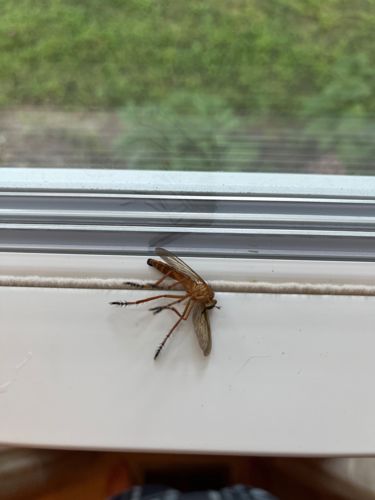Robber Fly
Scientific Name: Asilidae (family)
Order & Family: Order: Diptera, Family: Asilidae
Size: Typically range from 0.4 to 2 inches (1 cm to 5 cm) in length, though some species can be larger.

Natural Habitat
Robber flies can be found in a wide variety of habitats, including open grasslands, woodlands, forests, deserts, and cultivated fields. They often perch conspicuously on branches, rocks, or bare ground to observe for prey.
Diet & Feeding
Strictly carnivorous. Adults feed on a wide variety of other insects, often larger than themselves, including other flies, bees, wasps, butterflies, moths, grasshoppers, and beetles. Larvae feed on insect larvae and pupae in the soil or decaying wood.
Behavior Patterns
Robber flies are predatory insects. Adults are agile fliers and are known for their aggressive hunting techniques, ambushing prey mid-air or from a perch. They inject their victims with neurotoxic and proteolytic enzymes, paralyzing and liquefying the prey's internal contents before sucking them out. Larvae typically live in soil or decaying wood and are also predatory, feeding on insect larvae and pupae.
Risks & Benefits
Risk: While generally not aggressive towards humans, a robber fly may bite if handled. The bite can be painful but is not medically significant and does not transmit diseases. Benefits: Robber flies are beneficial insects in many ecosystems as excellent biological control agents. They help control populations of various pest insects, including those that are agricultural pests or nuisance insects.
Identified on: 8/14/2025